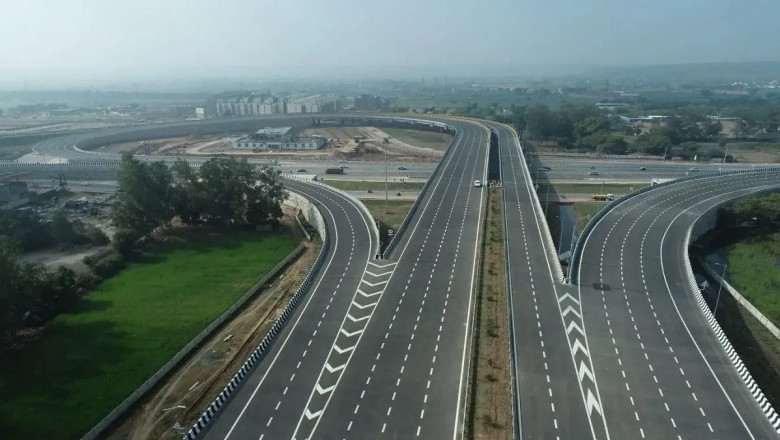views
Impact on Real Estate:
-
Rise in Property Values: Properties near existing and upcoming metro stations often witness an appreciation of 10–20% due to enhanced accessibility.
-
Increased Demand for Rentals: Areas along metro corridors attract working professionals and students, leading to a rise in rental demand.
-
Boost to Commercial Zones: Offices, co-working spaces, and retail outlets near metro stations benefit from increased footfall and workforce mobility.
-
Reduced Travel Time: Areas once considered ‘far’ are now just a few metro stops away from the city center, encouraging end-users and investors to consider suburban options.
Example: The Chennai Metro Phase 2, covering nearly 118.9 km, is expected to open up new real estate corridors in areas like Poonamallee, Madhavaram, and Sholinganallur.
Highways & Expressways: Unlocking Peripheral Growth
India’s National Infrastructure Pipeline (NIP) and Bharatmala Pariyojana projects have accelerated highway construction, improving intercity and interstate connectivity. Projects like the Delhi-Mumbai Expressway, Bengaluru Satellite Town Ring Road, and Chennai Peripheral Ring Road are laying the groundwork for widespread real estate expansion.
Impact on Real Estate:
-
Peripheral Land Development: New expressways reduce travel time drastically, making peripheral land more viable for residential and industrial development.
-
Logistics & Warehousing Growth: Areas close to highways become hotspots for logistics hubs, boosting demand for industrial and warehouse real estate.
-
Affordable Housing Opportunities: Improved road connectivity encourages affordable housing projects on city outskirts, making home ownership accessible to more people.
-
Appreciation of Undervalued Zones: Land prices in villages and small towns along new highways often double within a few years of project completion.
Example: The Bengaluru-Mysuru Expressway has spurred real estate interest in towns like Ramanagara and Channapatna, which are now witnessing the launch of plotted developments and gated communities.
Other Key Infrastructure Drivers
In addition to metros and highways, several other infrastructure initiatives are impacting real estate in India:
-
Airports & Aerotropolis Models: Expansion of regional airports and aerocity developments (e.g., Jewar Airport in Noida) lead to premium residential and commercial projects.
-
Smart Cities Mission: Integration of digital infrastructure, clean mobility, and planned urbanization attracts both investors and developers to smart city zones.
-
Waterways & Logistic Corridors: Inland waterways and multimodal logistics parks add value to nearby land and industrial clusters.
Real Estate Trends Emerging from Infrastructure Growth
-
Integrated Townships: Developers are increasingly launching self-sustaining townships near upcoming infrastructure zones with schools, malls, hospitals, and parks.
-
Mixed-Use Developments: Projects combining commercial, retail, and residential spaces are becoming common near metro hubs and transport corridors.
-
Green & Smart Living: Buyers now prefer eco-conscious homes in well-connected suburbs over congested city cores.
-
NRI Investment Spike: NRIs see infrastructure-led cities as a stable investment opportunity, driving global interest in Indian real estate.
The Role of Technology in Tracking Impact
With infrastructure projects spanning years, real estate decisions based on them require timely data and predictive insights. This is where technology solutions come into play—helping investors and developers make informed decisions.
Choose the Right Platform: Hexahome & Hexadecimal Software
Navigating the real estate opportunities created by infrastructure growth requires both local expertise and technological precision.
-
Hexahome is a trusted real estate platform that connects you with verified properties across emerging corridors—be it near a new metro line or upcoming highway. With a deep understanding of infrastructure-driven markets, Hexahome helps you find the right investment at the right time.
-
Hexadecimal Software, on the other hand, offers real estate businesses and developers advanced tools for property management, market analytics, and CRM automation. Whether you’re tracking metro impact zones or planning your next project near a ring road, Hexadecimal provides the digital backbone for smart decision-making.
Conclusion:
Infrastructure is the engine of real estate transformation. Whether you’re a homebuyer, investor, or developer, staying ahead of the curve means aligning your strategy with where the next metro or highway will go. And with platforms like Hexahome and Hexadecimal Software by your side, you’re never more than a click away from unlocking future-ready real estate opportunities.














Comments
0 comment